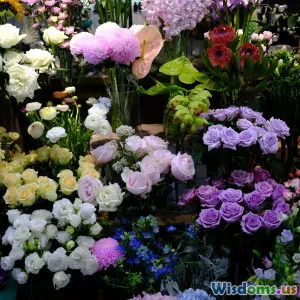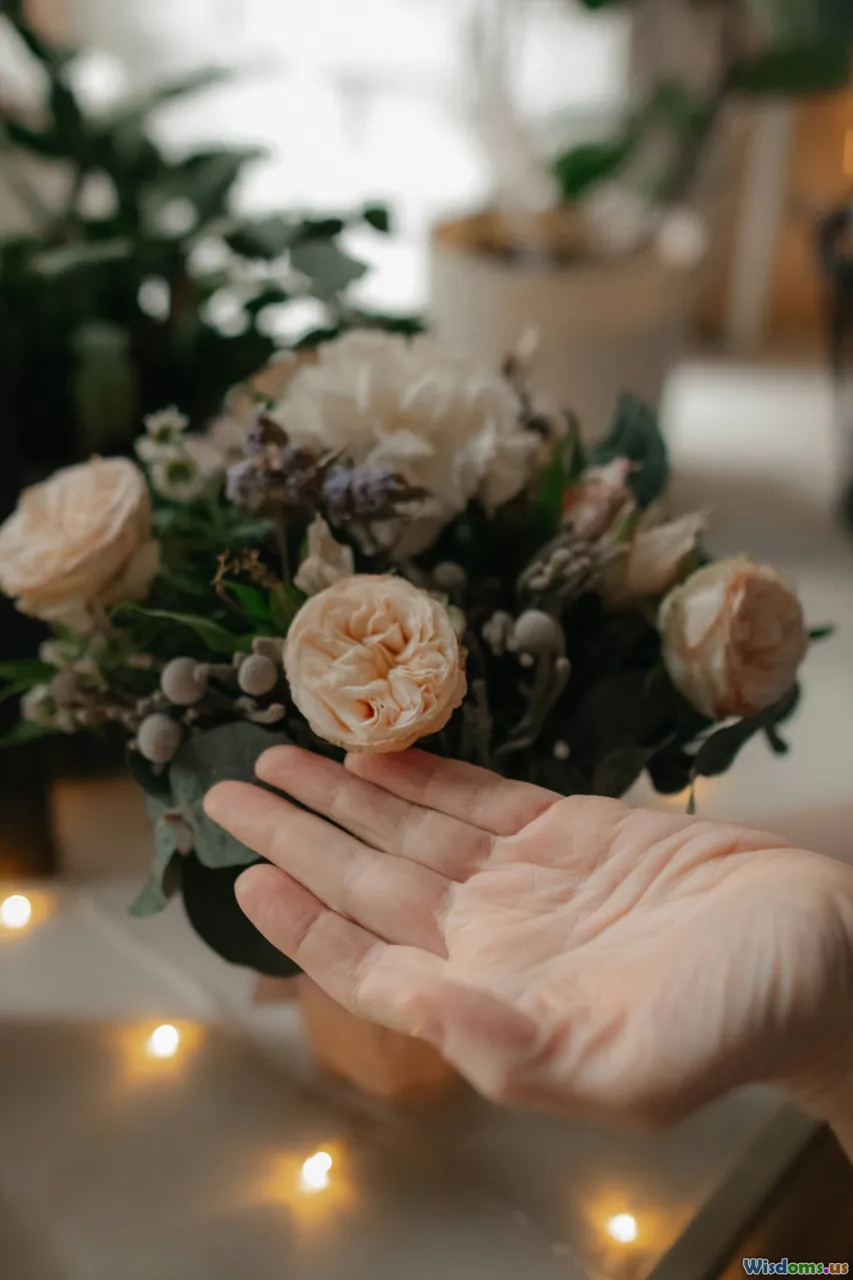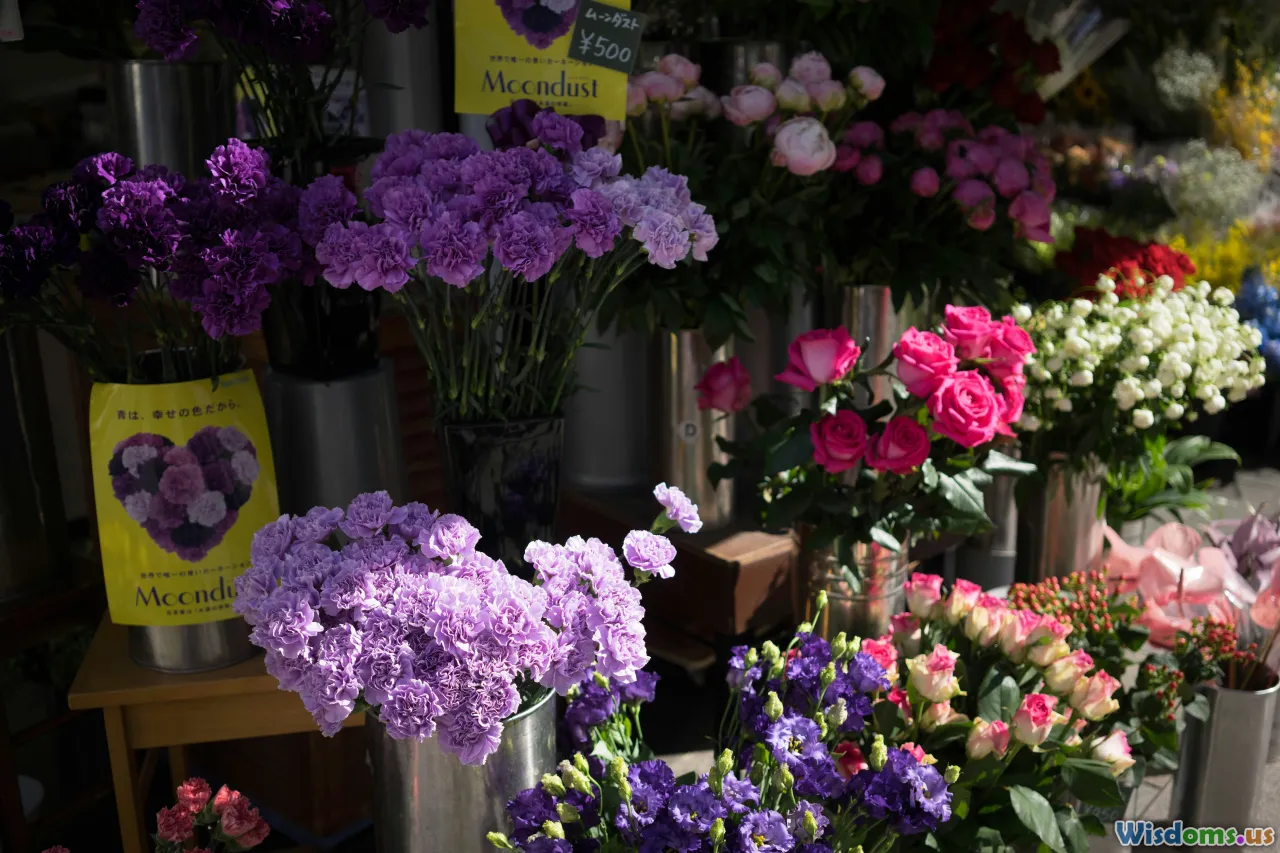
Is Floristry a Profitable Hobby or a Costly Passion
15 min read Explore whether floristry can be a profitable hobby or remains an expensive passion for most enthusiasts. (0 Reviews)
Is Floristry a Profitable Hobby or a Costly Passion?
Floristry is more than arranging pretty petals—it’s a craft that appeals to the creative spirit and draws enthusiasts and entrepreneurs alike. As social media channels overflow with lush bouquets and DIY arrangements, a growing number of people wonder: Is dabbling in floristry likely to bloom into a moneymaker, or will that rose-scented pastime wither wallets instead? Let’s examine the art and economics of floristry and explore whether it’s your next lucrative venture or simply a fulfilling, but lavish, hobby.
The Allure of Floristry: Creativity Meets Inspiration

Floristry’s appeal is undeniable. The act of arranging flowers allows for self-expression and delivers instant beauty—perfect for stress relief or redefining living spaces. For many, the inspiration comes from seeing stunning arrangements at weddings, events, or even on Instagram accounts like @floretflower. Beginners are often moved by the sight (and scent!) of fresh peonies or wildflowers, turning a trip to the flower market into a weekend ritual.
Some enthusiasts start simply, arranging blooms bought from a local grocery store or gathering wildflowers on nature walks. With time, passion takes root, and tools such as floral foam, shears, wires, and ribbons begin to make their way into personal craft corners. Florists cite the "magic moment" when a loose cluster turns into a harmonious arrangement as one of the most satisfying parts of their craft.
Example: Sarah, a digital marketing executive in London, started arranging market-bought flowers on weekends to escape her computer screen. Within months, friends began requesting bouquets for birthdays, and Sarah realized that what began as therapy might also offer profits.
Counting the Costs: Tools, Supplies, and Hidden Expenses

Behind every lush arrangement is a not-so-pretty list of costs. Understanding what’s required can help you decide if floristry is just a fleeting indulgence—or a smart investment.
Initial Essentials:
- Shears & Snips: Quality floral shears cost $15–$40.
- Vases & Containers: Starter sets for $20–$60; vintage or designer pieces fetch more.
- Floral Foam & Wire: Around $15–$30 for beginner packs.
- Fresh Flowers: Priced by stem/type; grocery flowers may be $7–$15/bunch; specialty blooms (ranunculus, orchids) can reach $4–$10 per stem.
"Hidden costs” sneak in with items like ribbons, preservatives, cleaning agents, or delivery boxes. If scaling up from hobby to business, expect to pay for insurance, licenses, transportation, marketing, and events materials.
Fact: According to a 2022 U.S. Small Business Administration review, starting a small floristry business at home typically requires an upfront investment of $1,500–$5,000, depending on scale, supplies, and local costs.
Making Money with Floristry: Profitable Pathways

The divide between an expensive passion and a profitable hobby lies in how you monetize your talent. With planning, passion, and savvy branding, floristry can be a flourishing side hustle—or even a full-time venture.
1. Selling Arrangements and Bouquets
The most direct route is through retail: crafting arrangements for sale to friends, family, or at local markets. Wedding florals or event work fetch premium rates. For example, bridal bouquets often sell for $120–$350, while table centerpieces can run $50–$200 each (source: WeddingWire, 2023).
2. Subscription Flower Services
Home-delivered bouquets and weekly flower subscriptions are trending. A well-run subscription (e.g., $25–$50 for a weekly bouquet drop) offers steady revenue. This works especially well in urban areas where customers crave regular fresh flowers but lack time to source arrangements themselves.
3. Workshops, Classes, and Online Tutorials
Those with expertise can organize local workshops (£25–£60 per attendee in the UK is common) or cultivate audiences on YouTube, TikTok, or Instagram. Successful tutorials can attract sponsorships, affiliate marketing, or direct class sales on skill-sharing platforms.
4. Corporate and Event Contracts
Florists often find consistent work decorating hotel lobbies, restaurants, or offices. Regular event contracts ensure recurring income, which helps stabilize profit margins and offset seasonal fluctuations.
Example: Victoria, founder of PetalPress in Toronto, started by selling bouquets at farmers’ markets, then expanded into subscription deliveries and event contracts. Within 18 months, floristry replaced her 9-to-5 job—with profits averaging $3,500/month after expenses.
The Economics of Hobby vs. Business

While profits can be enticing, many floristry devotees report non-monetary gains: stress reduction, improved mood, mindfulness, increased dexterity, and enhanced creative problem solving.
Case in Point: A University of North Florida study (2018) showed that people who received flowers reported less anxiety, sadness, and depression. Tending to flowers—even arranging them—can induce the same happiness boost for enthusiasts.
Volunteering as a hobbyist (e.g., providing florals for local causes, nursing homes, or charities) brings societal value and builds a web of connections in your community.
Pro Tips: Keeping Floristry Fun and Financially Sustainable

For hobbyists, staying budget-conscious and intentional goes a long way to maximizing both enjoyment and economic value.
How-to: Hobby Floristry on a Budget
- Start Small: Beginners can practice with inexpensive supermarket bunches and recycled jars, skipping costly tools until skills grow.
- Join Classes or Clubs: Local garden societies sometimes offer group buys or access to community gardens for seasonal blooms.
- Buy in Bulk: Find floral wholesalers or growers nearby—cost per stem plummets if you’re purchasing larger quantities, especially for group projects.
- Grow Your Own: If space allows, try planting a small flower garden for free or nearly-free materials during certain seasons (sunflowers, dahlias, zinnias are beginner-friendly choices).
- Share Supplies: Exchange surplus ribbon, vases, or unique finds with friends to keep materials fresh and affordable.
- Repurpose and Recycle: Use foraged greenery and repurpose decorations from one event to another to save on costs.
Transitioning from Hobby to Profit
- Create a Portfolio: Document your arrangements with high-quality photos. A simple Instagram feed or website conveys your style.
- Know Your Niche: Focus on what excites you—garden-inspired bouquets, lush wedding florals, dried flower arrangements, or minimalist Japanese ikebana.
- Network Actively: Collaborate with small event planners, local cafés, or wedding photographers. Partnership opportunities abound in the creative sector.
- Invest in Training: Online certification (like those offered by the American Institute of Floral Designers) can boost credibility.
- Stay Legal: If selling regularly, explore your city’s permits or health and safety requirements.
The Social Side: Community and Collaboration

Floristry flourishes in social settings. Group workshops offer camaraderie and fast-tracked learning; online communities like Reddit’s r/florists or Facebook groups for flower fanatics are invaluable for troubleshooting, sharing inspiration, and business advice.
Pop-up markets challenge hobbyists to gain customer feedback and hone sales skills. Many suppliers provide discounts to club or group orders, making it easier and cheaper to experiment. Collaboration with other creatives—such as photographers, stylists, or event venues—can spread costs and ignite new ideas.
Real-World Example: Jenna, based in New South Wales, hosts a monthly flower club where members take turns providing blooms. Each gathering mixes education, friendly competition, and trade—which, as Jenna reports, “makes floristry an adventure, not an expense.”
Common Pitfalls and How to Avoid Them

The leap from flower fan to business owner (or even a savvy hobbyist) can involve some thorny realities:
- Overbuying Blooms: Without careful planning, flowers can wilt before use—resulting in loss. Start with clear project goals and only buy what you need.
- Underpricing Work: Many beginners undervalue arrangements; factor in time as well as materials. Industry pros recommend marking up materials by 2.5x–3x to cover time, spoilage, and overhead.
- Neglecting Freshness: Stale stems are unsellable within days. Prolong life via correct hydration, temperature, and handling—many free guides exist online.
- Ignoring Trends: Style and color tastes change. Monitor social feeds, bridal sites, and trade publications for inspiration and commercial resonance.
- Disorganization: Tracking supplies, orders, and payments quickly gets overwhelming. Even hobbyists benefit from a simple spreadsheet or tracking app.
Final Thoughts: Blossoming with Purpose

Floristry offers a unique intersection of beauty, creativity, business, and wellness. While it can absolutely blossom into a profitable venture—with enough planning and perseverance—for many, the greatest return is measured in joy, personal growth, and unique connections.
Whether you’re arranging posies for the pure pleasure of it or looking to build a blooming business, the secrets to success remain the same: start small, stay curious, embrace community, and run the numbers. A beautiful bouquet may not always pad your savings, but crafting a life rich in flowers is, in many ways, its own reward.
Rate the Post
User Reviews
Other posts in Floristry & Flower Crafts
Popular Posts














